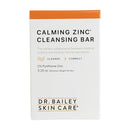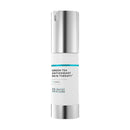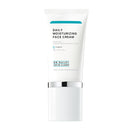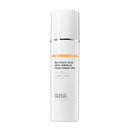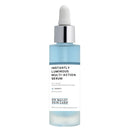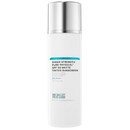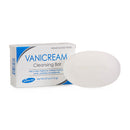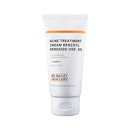Foot Calluses: The Good, the Bad, and the Ugly


Foot calluses - are they good, bad, harmful, helpful, or just ugly? Calluses certainly aren't attractive. They can hurt, crack and open skin to infection. There's no way around them if you are hard on your feet like I am. But you can make them better with the right creams and treatments like my Smooth and Soft Rough Skin Remover Kit. My nurse and I actually created this routine for our own hard working feet.
FAQ about Foot Calluses
Why do you get foot calluses?
Calluses form from all the pressure and friction that happens as you take step after step and your feet support your weight on all those small bones that create foot structure.
According to the American Podiatric Medical Association:
-
Most Americans log an amazing 115,000 miles on their feet in their lifetime. By age 70 this is equal to walking around the globe 4 times!

As a dermatologist, I also see a lot of feet, and I treat a lot of corns, callouses, and plantar warts.
- If the thickening of skin occurs on the top of your foot it's most likely a callus.
- If it happens on the bottom of your foot it can be a corn, callus or plantar wart.
- If the bottom of your foot has a small kernel-like tender hard spot over one of the points of a foot bone it may be a corn. These can form from the way the pressure on your foot hits against the bone causing the hard dead skin cells to fold in and make that little tender kernel.
- Plantar warts and hard corns on the bottoms of the feet can be hard to distinguish by the untrained eye. Warts also form more commonly on the pressure points of your feet. Plantar warts tend to be larger and have little black dots in them that represent little blood vessels that are stimulated to form by the wart virus.
- If the tender little spot happens between your toes it may be a soft corn caused from the way the skin pushes against the tiny toe bones.
- If corns, calluses or plantar warts are causing pain and discomfort or inhibiting your daily life in any way, see a podiatrist or dermatologist.
Remember to apply sunscreen all over your feet, especially the tops and fronts of ankles, and don't forget to reapply after you've been in the water.
The Good - Yes, Calluses Can Be Good!

Foot calluses are dead skin cells that have built up to protect your tender skin from repeated pounding of your weight against the ground or rubbing against your shoes. The good news is calluses can actually be a good thing, especially if you're a runner. Calluses can tell you where you're putting your weight. They can be an indication of where you need to work on your stride, or if you're landing too hard in one place. If you walk extensively, they can help you walk with more comfort over long stretches of time and pavement.
The Bad - Why You Might Want to Treat a Callus
Calluses can get too thick, especially in the winter when the weather and the use of heaters can dry things out. When your calluses get dried, they can crack, hurt and even cause infections. Using a pumice stone or foot file on your feet in the shower can be a very useful thing. It is important to try to sand the calluses off so they don't get too thick.
This is especially true if you have diabetes. People with diabetes are at higher risk for serious foot infections and need to place their feet under the care of a podiatrist or dermatologist rather than take matters into their own hands.
The Ugly - Thick Skin on the Feet Can Be Unsightly
Calluses tend to be unsightly. If left unattended, the thick white skin can get gnarly and cracked, even painful if ignored. Fortunately, it's a relatively simple process to get your foot calluses under control.
There are two methods of removal: chemical and physical. Chemical removal involves the use of a strong exfoliating product that will dissolve the rough skin. Physical removal is done with a pumice or foot file and a little bit of elbow grease.

Dr. Bailey’s 3 Steps to Treat Calluses at Home for Soft and Smooth Feet
- Soak your feet in warm water or a shower for 10-15 minutes.
- While your feet are wet, physically exfoliate your feet with a foot file or pumice stone. Be careful to not hurt your feet during this step.
- Apply Glycolic Acid Lotion to your damp feet after toweling your feet off to dry. Be more liberal with the cream where the skin is thicker. Wear a clean pair of breathable socks over your treated feet for at least 8 hours.
Repeat the soaking and sanding the next day. You will notice how the calluses are now much softer and easier to remove.
To make things simpler, Dr. Bailey put together a kit, Soft and Smooth - Rough Skin Remover Kit, so you can get everything in one place.

You don't have to hide your feet this summer. Show them off with pride minus the thick calluses - your classy new sandals deserve it!


